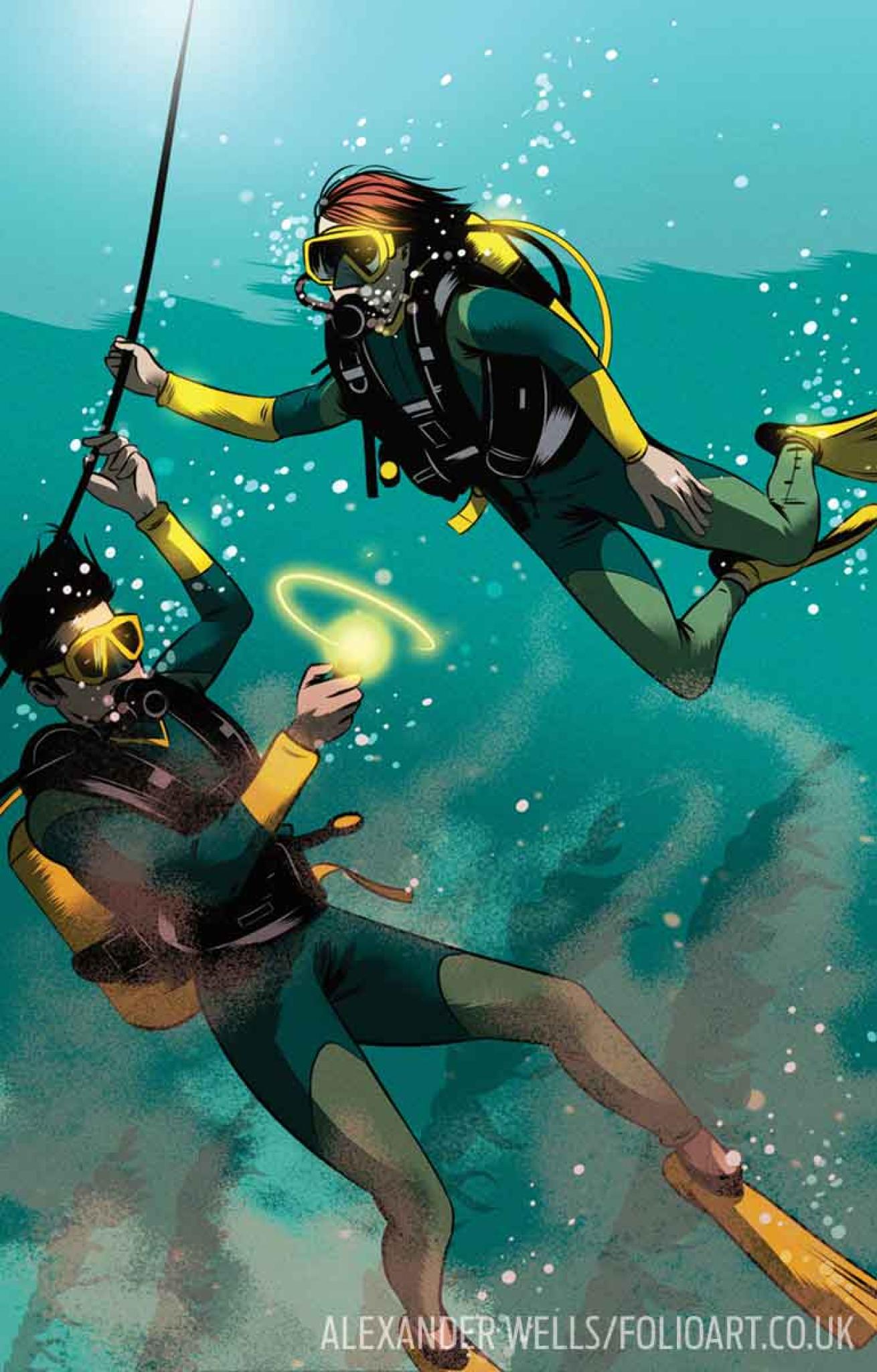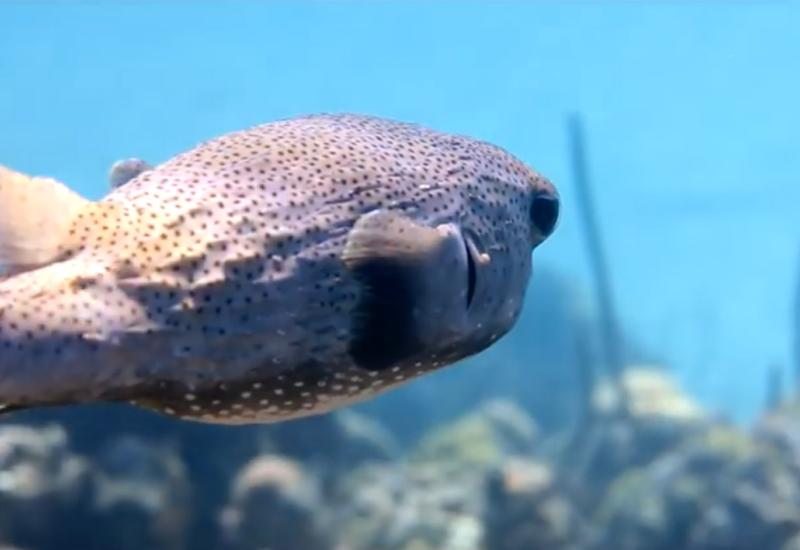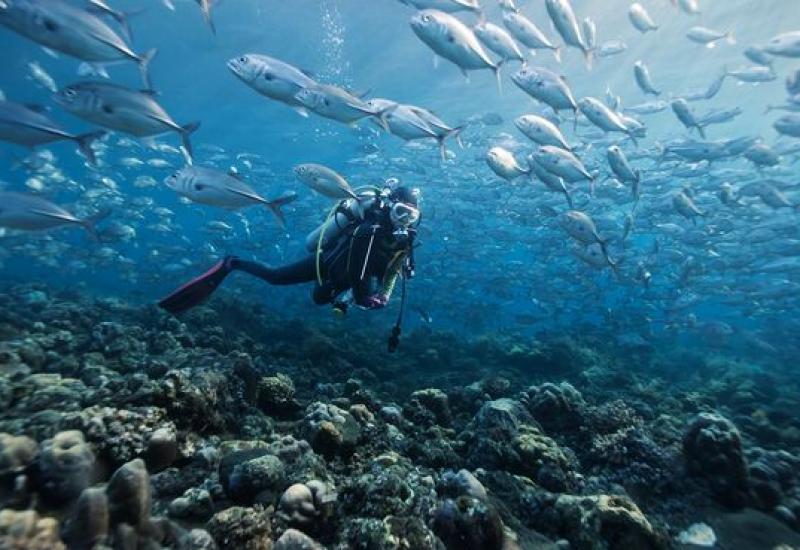How To Handle Low-Visibility Situations While Scuba Diving

Illustration by Alexander Wells/Folioart.co.ukKeeping contact with your buddy, whether through visual aids or touch signals, is critical on low-viz dives.
Less-than-stellar visibility doesn’t have to ruin your diving — here’s how to deal
If you’ve been diving long enough, it’s music to your ears when your briefing includes “crystal-clear viz.” Unfortunately, there’s no such thing as guaranteed clear water. A dive site’s visibility — the estimated distance a diver can see horizontally — is impacted by a number of factors, but especially weather, particulates in the water such as sand and sediment, and water movement. And in some cases, a site’s viz is always limited, such as when diving in low-light caves or in thick-plankton- rich waters.
Diving in bad visibility is like driving in a dangerous fog. At best, you have some limited range of sight, but objects are hazy and blurred. At worst, you can’t see your hand in front of your mask, and you’re at risk for the underwater equivalent of a 50-car pileup on a highway shrouded in impenetrable fog. Whatever the reasons, when the water is more pea-soup murky than gin-and-tonic sparkling, you need a strategy for handling it. We asked a few dive pros for their best tips.
Maintain Contact
The No. 1 rule for diving at sites with poor visibility is to never lose contact with your buddy, because in the case of an emergency, you still need to be able to communicate with one another.
“When the viz is only 1 or 2 feet, it’s easier to get separated,” says Karl Shreeves, technical development executive at PADI. “Usually, you can signal and communicate as you normally would. But if you’re expecting very low viz, you can use a buddy line to stay together and agree on touch signals.”
READ MORE: What You Need to Know About the Rescue Diver Course
Communicating via touch is something cave divers learn in the case of zero-viz events, but when you have, say, 15 to 25 feet of viz, you and your buddy can use visual and audible signals to relay information. Liz Parkinson of Stuart Cove’s Dive Bahamas recommends making “a circular movement with your dive light to signal ‘OK,’ and three tank bangs with a noisemaker to abort a dive.” Shine a light on your fingers when indicating air remaining or that you’re ready to end the dive.
Establish Points of Reference
Getting disoriented is another concern when diving in reduced viz. Descent and ascent lines can be critical when you can see only a few feet. “When you’re diving deeper, make sure you have something to follow down to the bottom, whether it’s a sloping bottom or a line to follow,” says Jo Mikutowicz, managing partner of Divetech on Grand Cayman. “Just descending with nothing to focus on and not knowing where the bottom is can be a bit disconcerting.”
Shreeves agrees: “If you’re using an anchor or mooring line, it’s a good idea to have a DSMB (delayed surface marker buoy) and reel, just in case you ascend away from the boat.”
Your gauges — either your computer or depth gauge — should be checked frequently during the dive to monitor your depth, direction and ascent rate. “In low viz, it can be hard to know critical information such as air remaining,” says Mikutowicz. “And if you can’t see the bottom or a line, it can be hard to know your ascent rate. Check your computer often, and listen for alarms. If your computer has visual alarms and it’s hard to read, hold it close to your face.”
Accessorize
While current fashion trends may favor black gear, low-visibility conditions call for just the opposite in your underwater wardrobe — think loud and easy to see. “Wearing bright-yellow fins can help your buddy spot you underwater,” says Parkinson. Even affixing a bit of neon-bright tape to the bottom of your fins and BC can make you more visible.
A dive light helps illuminate your surroundings, though it doesn’t work well in certain low-viz or low-light scenarios — in fact, it might hurt.
READ MORE: Tips for Staying Warm
“A dive light helps in dark water where the sun cannot reach — such as a cave — but would sometimes make it worse in a silted-out environment,” says Mikutowicz. That’s because the beam might “light up the particles and make it more difficult to see.”
What type of light is best? It can depend on the conditions, but Shreeves says to choose a light with a tight, powerful beam.
“It sometimes helps to hold it off to the side and angle it. If you’ve ever driven in fog at night, you know that wide-beam lights pointed straight ahead can make it harder to see — that sometimes happens when diving in low viz. And you really should have at least two, just like on a night dive, so you have a backup if your primary one fails.”
When the water clarity is murky, it can be difficult to see hazardous structures or marine life. “I generally recommend wearing gloves,” says Shreeves. Parkinson advises wearing a full-length wetsuit for the same reason.
The Bottom Line
Sometimes, diving in poor viz can’t be avoided, such as in a sudden silt-out or at a site you love to dive, despite its lousy water clarity.
Mikutowicz’s low-viz happy place is Puget Sound, Washington. “It doesn’t always have reduced viz, but when I dived there it did. But the viz didn’t take away from the dive — I saw a wolf eel, giant Pacific octopus and amazing anemones. And everything appears to be moving because all the barnacles are open and feeding. It’s a pretty magical place.”
Finally, remember this: If a site’s viz makes it difficult to control the dive in any way (e.g., maintaining your depth, communicating with buddies, etc.) or causes you to lose your way, it is time to call the dive.










